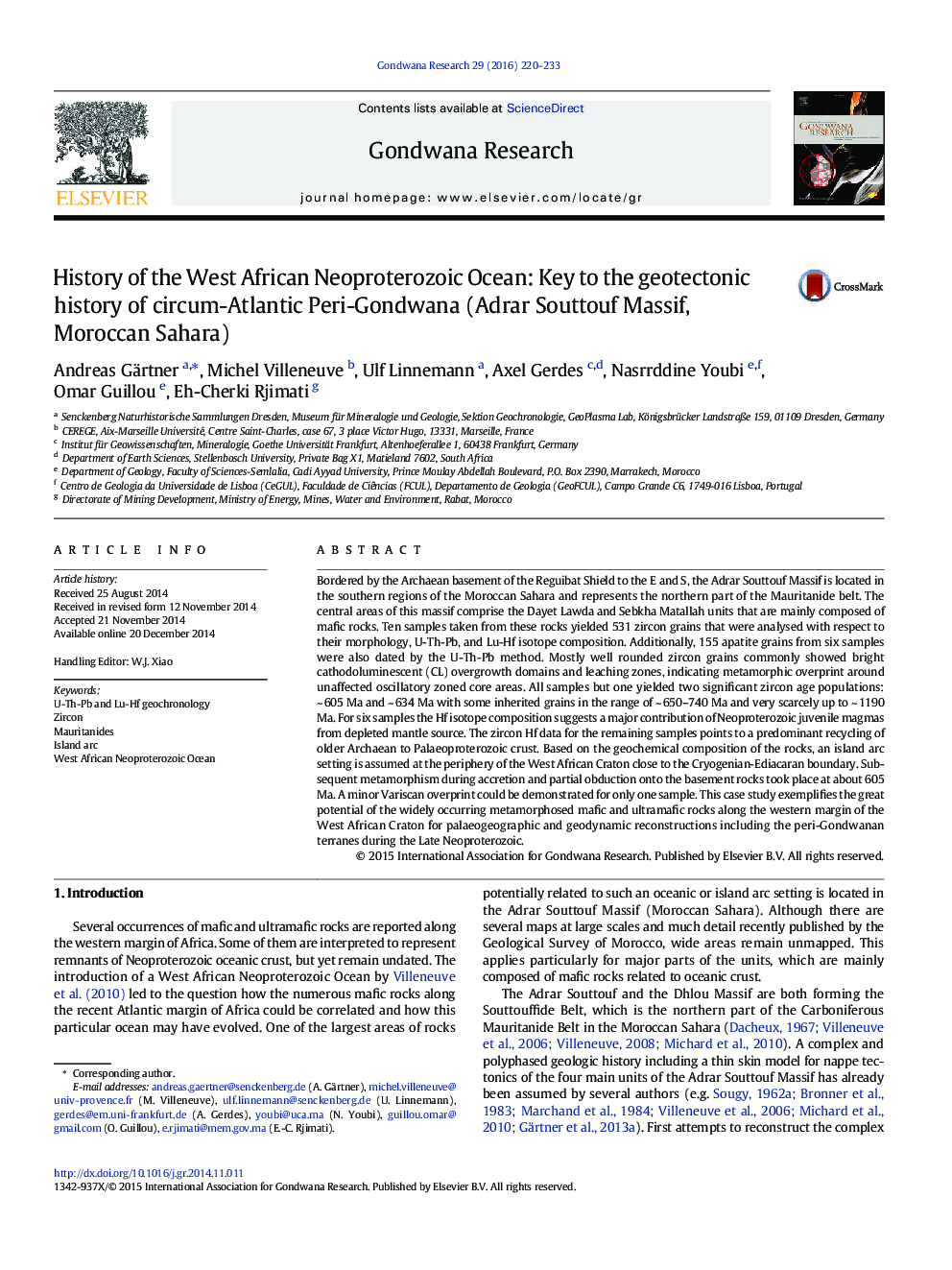| کد مقاله | کد نشریه | سال انتشار | مقاله انگلیسی | نسخه تمام متن |
|---|---|---|---|---|
| 4726781 | 1356346 | 2016 | 14 صفحه PDF | دانلود رایگان |

• U-Pb zircon data reveals the history of the West African Neoproterozoic Ocean.
• The formation of an oceanic island arc was at ~ 634 Ma.
• Accretion to the WAC and metamorphism occurred around 605 Ma.
Bordered by the Archaean basement of the Reguibat Shield to the E and S, the Adrar Souttouf Massif is located in the southern regions of the Moroccan Sahara and represents the northern part of the Mauritanide belt. The central areas of this massif comprise the Dayet Lawda and Sebkha Matallah units that are mainly composed of mafic rocks. Ten samples taken from these rocks yielded 531 zircon grains that were analysed with respect to their morphology, U-Th-Pb, and Lu-Hf isotope composition. Additionally, 155 apatite grains from six samples were also dated by the U-Th-Pb method. Mostly well rounded zircon grains commonly showed bright cathodoluminescent (CL) overgrowth domains and leaching zones, indicating metamorphic overprint around unaffected oscillatory zoned core areas. All samples but one yielded two significant zircon age populations: ~ 605 Ma and ~ 634 Ma with some inherited grains in the range of ~ 650–740 Ma and very scarcely up to ~ 1190 Ma. For six samples the Hf isotope composition suggests a major contribution of Neoproterozoic juvenile magmas from depleted mantle source. The zircon Hf data for the remaining samples points to a predominant recycling of older Archaean to Palaeoproterozoic crust. Based on the geochemical composition of the rocks, an island arc setting is assumed at the periphery of the West African Craton close to the Cryogenian-Ediacaran boundary. Subsequent metamorphism during accretion and partial obduction onto the basement rocks took place at about 605 Ma. A minor Variscan overprint could be demonstrated for only one sample. This case study exemplifies the great potential of the widely occurring metamorphosed mafic and ultramafic rocks along the western margin of the West African Craton for palaeogeographic and geodynamic reconstructions including the peri-Gondwanan terranes during the Late Neoproterozoic.
Figure optionsDownload as PowerPoint slide
Journal: Gondwana Research - Volume 29, Issue 1, January 2016, Pages 220–233